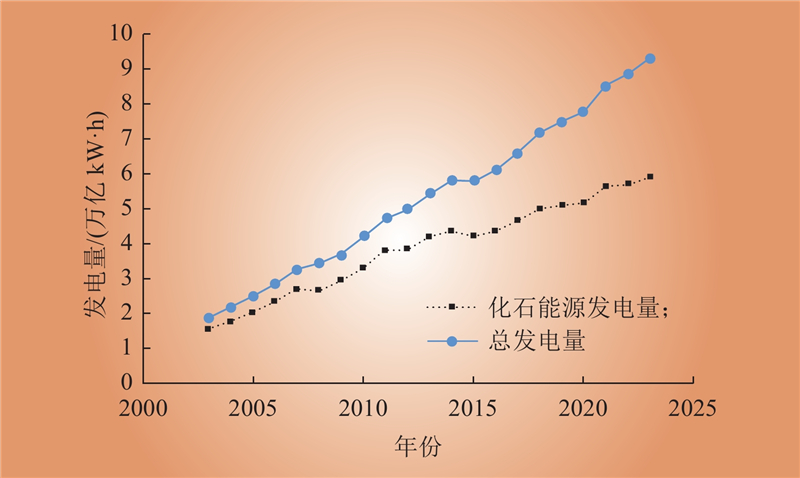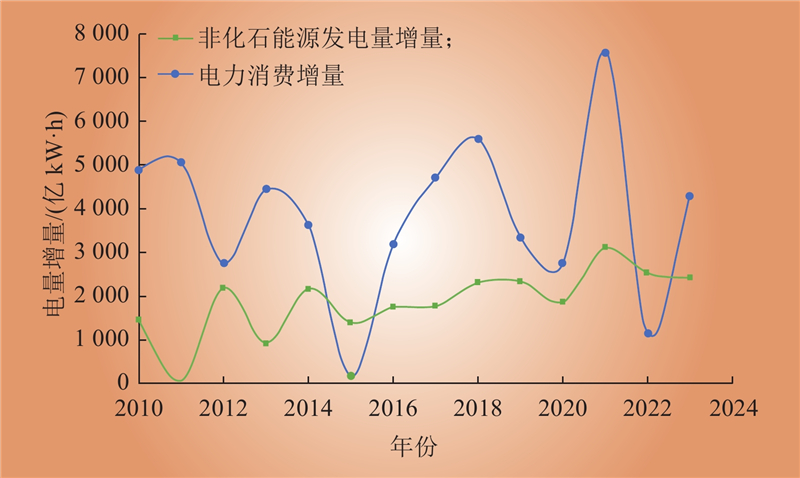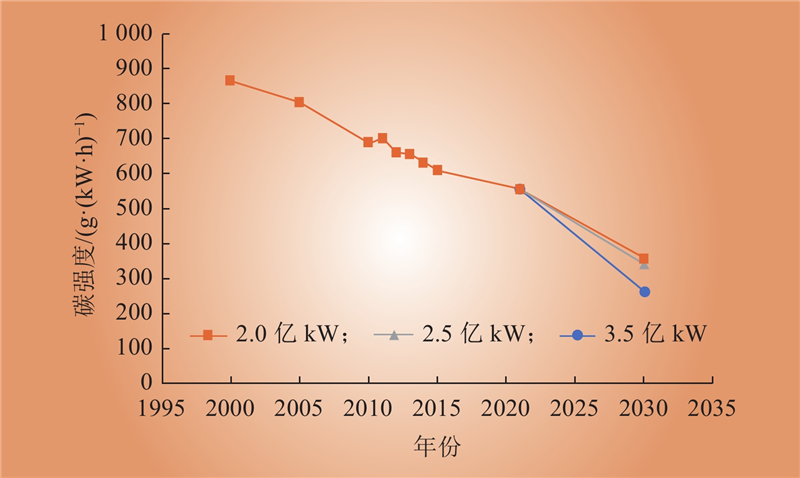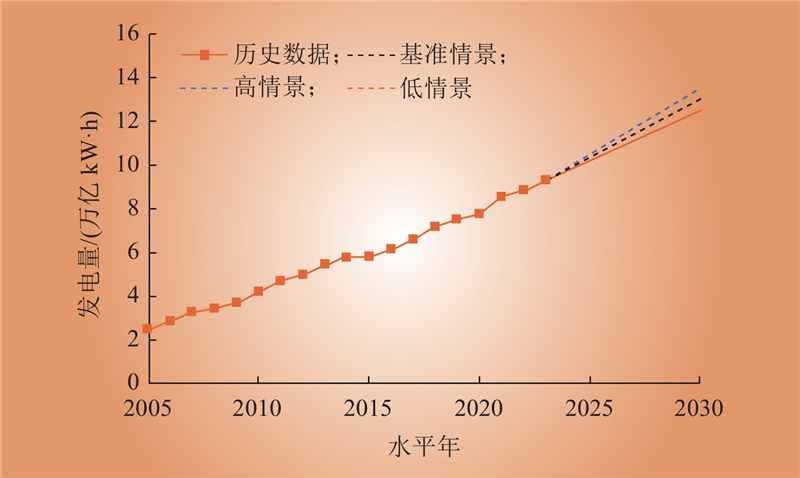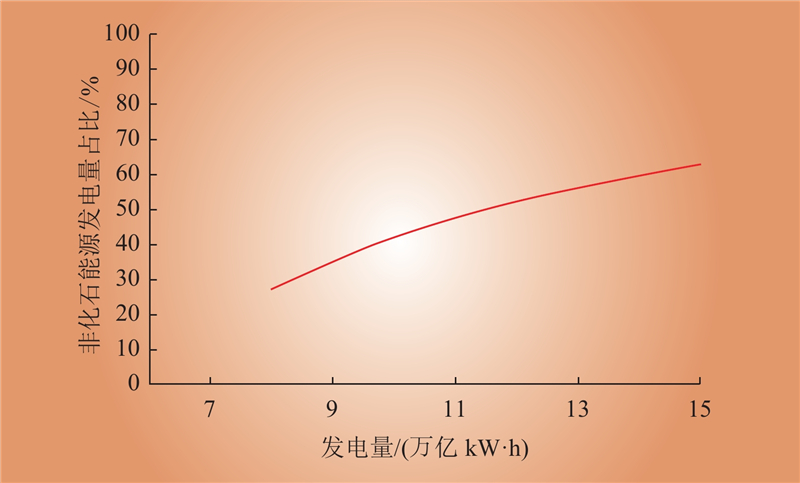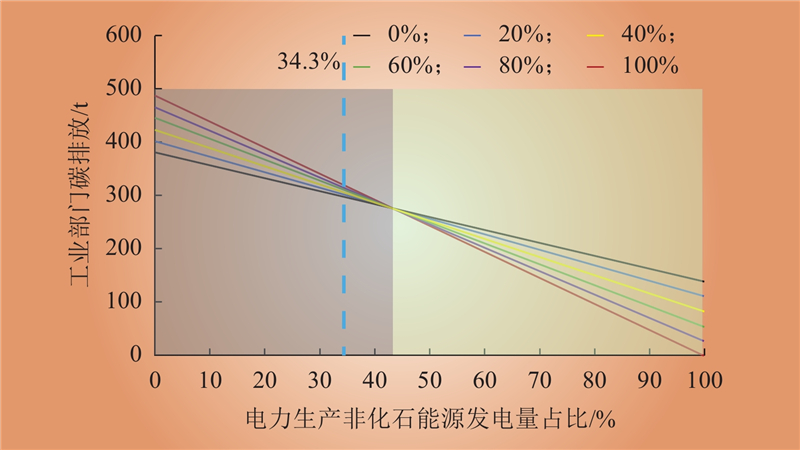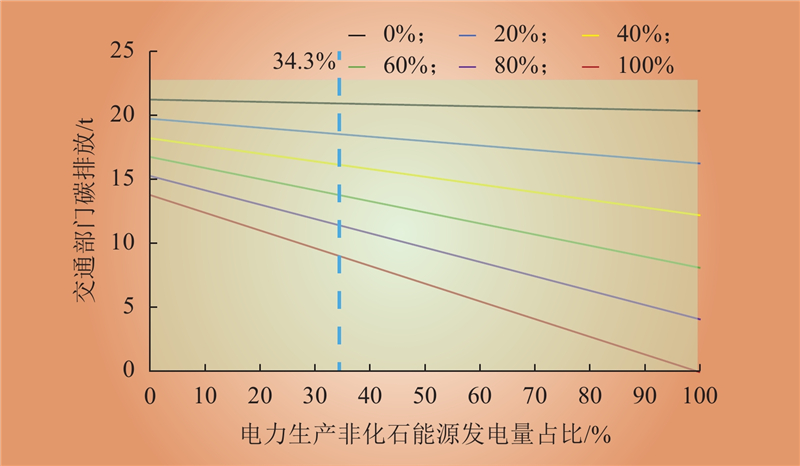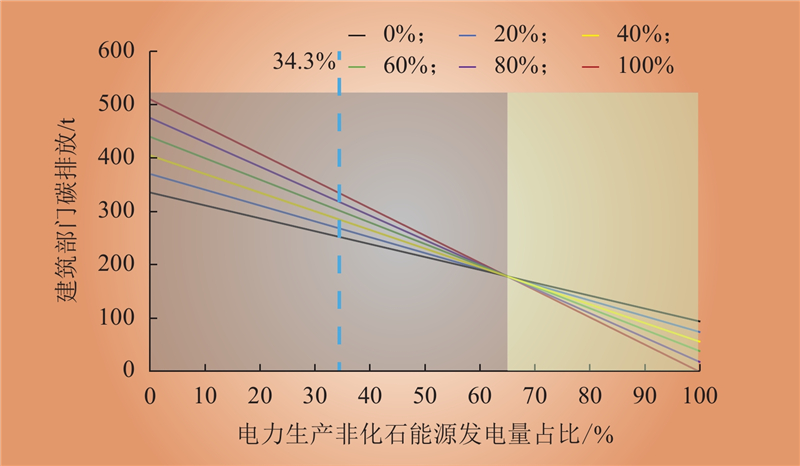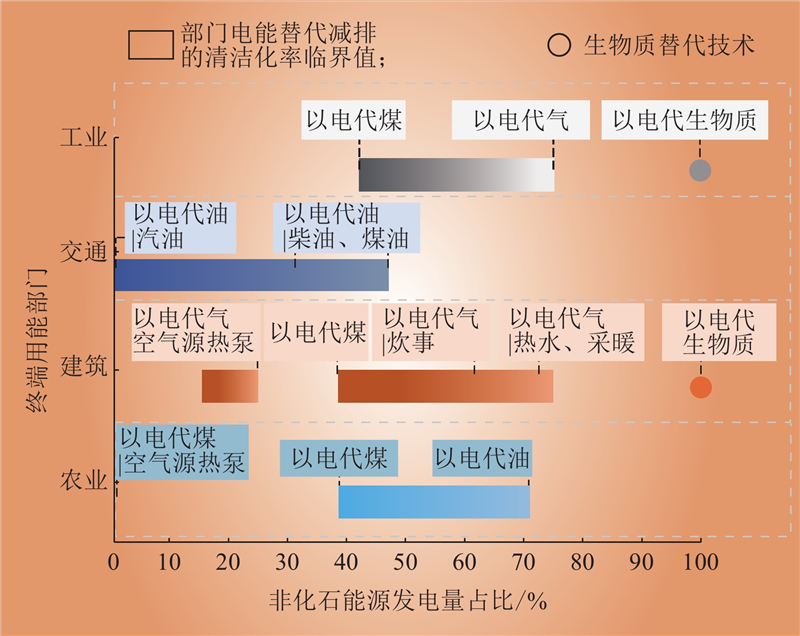| 1 |
周原冰, 杨方, 余潇潇, 等. 中国能源电力碳中和实现路径及实施关键问题[J]. 中国电力, 2022, 55 (5): 1- 11.
|
|
ZHOU Yuanbing, YANG Fang, YU Xiaoxiao, et al. Realization pathways and key problems of carbon neutrality in China's energy and power system[J]. Electric Power, 2022, 55 (5): 1- 11.
|
| 2 |
余碧莹, 赵光普, 安润颖, 等. 碳中和目标下中国碳排放路径研究[J]. 北京理工大学学报(社会科学版), 2021, 23 (2): 17- 24.
|
|
YU Biying, ZHAO Guangpu, AN Runying, et al. Research on China's CO2 emission pathway under carbon neutral target[J]. Journal of Beijing Institute of Technology (Social Sciences Edition), 2021, 23 (2): 17- 24.
|
| 3 |
NIU Z H, XIONG J L, DING X S, et al. Analysis of China's carbon peak achievement in 2025[J]. Energies, 2022, 15 (14): 5041.
DOI
|
| 4 |
FANG G C, WANG L, GAO Z Y, et al. How to advance China's carbon emission peak? —a comparative analysis of energy transition in China and the USA[J]. Environmental Science and Pollution Research, 2022, 29 (47): 71487- 71501.
DOI
|
| 5 |
ZHANG S N, YANG F, LIU C Y, et al. Study on global industrialization and industry emission to achieve the 2 ℃ goal based on MESSAGE model and LMDI approach[J]. Energies, 2020, 13 (4): 825.
DOI
|
| 6 |
张士宁, 谭新, 侯方心, 等. 全球碳中和形势盘点与发展指数研究[J]. 全球能源互联网, 2021, 4 (3): 264- 272.
|
|
ZHANG Shining, TAN Xin, HOU Fangxin, et al. Research on global carbon neutrality target and development index[J]. Journal of Global Energy Interconnection, 2021, 4 (3): 264- 272.
|
| 7 |
朱法华, 王玉山, 徐振, 等. 中国电力行业碳达峰、碳中和的发展路径研究[J]. 电力科技与环保, 2021, 37 (3): 9- 16.
|
|
ZHU Fahua, WANG Yushan, XU Zhen, et al. Research on the development path of carbon peak and carbon neutrality in China's power industry[J]. Electric Power Technology and Environmental Protection, 2021, 37 (3): 9- 16.
|
| 8 |
魏一鸣, 余碧莹, 唐葆君, 等. 中国碳达峰碳中和时间表与路线图研究[J]. 北京理工大学学报(社会科学版), 2022, 24 (4): 13- 26.
|
|
WEI Yiming, YU Biying, TANG Baojun, et al. Roadmap for achieving China's carbon peak and carbon neutrality pathway[J]. Journal of Beijing Institute of Technology (Social Sciences Edition), 2022, 24 (4): 13- 26.
|
| 9 |
舒印彪, 张丽英, 张运洲, 等. 我国电力碳达峰、碳中和路径研究[J]. 中国工程科学, 2021, 23 (6): 1- 14.
DOI
|
|
SHU Yinbiao, ZHANG Liying, ZHANG Yunzhou, et al. Carbon peak and carbon neutrality path for China's power industry[J]. Strategic Study of CAE, 2021, 23 (6): 1- 14.
DOI
|
| 10 |
SUN Z R, LIU Y D, YU Y N. China's carbon emission peak pre-2030: exploring multi-scenario optimal low-carbon behaviors for China's regions[J]. Journal of Cleaner Production, 2019, 231, 963- 979.
DOI
|
| 11 |
MAI L N, RAN Q Y, WU H T. A LMDI decomposition analysis of carbon dioxide emissions from the electric power sector in Northwest China[J]. Natural Resource Modeling, 2020, 33 (4): e12284.
DOI
|
| 12 |
MA Z Y, ZHANG S N, HOU F X, et al. Exploring the driving factors and their mitigation potential in global energy-related CO2 emission[J]. Global Energy Interconnection, 2020, 3 (5): 413- 422.
DOI
|
| 13 |
叶爱山, 李晓华, 邓洋阳, 等. “双碳” 目标下中国碳达峰预测和减排路径研究[J]. 科技和产业, 2023, 23 (23): 34- 43.
DOI
|
|
YE Aishan, LI Xiaohua, DENG Yangyang, et al. Research on China's carbon peak prediction and emission reduction path under the "dual carbon" goal[J]. Science Technology and Industry, 2023, 23 (23): 34- 43.
DOI
|
| 14 |
LUO F, GUO Y, YAO M T, et al. Carbon emissions and driving forces of China's power sector: input-output model based on the disaggregated power sector[J]. Journal of Cleaner Production, 2020, 268, 121925.
DOI
|
| 15 |
LUO S H, HU W H, LIU W, et al. Study on the decarbonization in China's power sector under the background of carbon neutrality by 2060[J]. Renewable and Sustainable Energy Reviews, 2022, 166, 112618.
DOI
|
| 16 |
TANG B J, LI R, YU B Y, et al. How to peak carbon emissions in China's power sector: a regional perspective[J]. Energy Policy, 2018, 120, 365- 381.
DOI
|
| 17 |
SU K, LEE C M. When will China achieve its carbon emission peak? a scenario analysis based on optimal control and the STIRPAT model[J]. Ecological Indicators, 2020, 112, 106138.
DOI
|
| 18 |
周孝信, 赵强, 张玉琼. “双碳”目标下我国能源电力系统发展前景[J]. 科学通报, 2024, 69 (8): 983- 989.
|
|
ZHOU Xiaoxin, ZHAO Qiang, ZHANG Yuqiong. Prospect of China's energy and power system under dual carbon goals[J]. Chinese Science Bulletin, 2024, 69 (8): 983- 989.
|
| 19 |
QI Y, STERN N, HE J K, et al. The policy-driven peak and reduction of China's carbon emissions[J]. Advances in Climate Change Research, 2020, 11 (2): 65- 71.
DOI
|
| 20 |
陈怡, 田川, 曹颖, 等. 中国电力行业碳排放达峰及减排潜力分析[J]. 气候变化研究进展, 2020, 16 (5): 632- 640.
|
|
CHEN Yi, TIAN Chuan, CAO Ying, et al. Research on peaking carbon emissions of power sector in China and the emissions mitigation analysis[J]. Climate Change Research, 2020, 16 (5): 632- 640.
|
| 21 |
WU G Q, NIU D X. A study of carbon peaking and carbon neutral pathways in China's power sector under a 1.5℃ temperature control target[J]. Environmental Science and Pollution Research, 2022, 29 (56): 85062- 85080.
DOI
|
| 22 |
李晖, 刘栋, 姚丹阳. 面向碳达峰碳中和目标的我国电力系统发展研判[J]. 中国电机工程学报, 2021, 41 (18): 6245- 6259.
|
|
LI Hui, LIU Dong, YAO Danyang. Analysis and reflection on the development of power system towards the goal of carbon emission peak and carbon neutrality[J]. Proceedings of the CSEE, 2021, 41 (18): 6245- 6259.
|
| 23 |
张士宁, 马志远, 杨方, 等. 全球可再生能源发电减排技术及投资减排成效评估分析[J]. 全球能源互联网, 2020, 3 (4): 328- 338.
|
|
ZHANG Shining, MA Zhiyuan, YANG Fang, et al. Assessment of carbon emission reduction and costs of global renewable energy investment[J]. Journal of Global Energy Interconnection, 2020, 3 (4): 328- 338.
|
| 24 |
DONG F, HUA Y F, YU B L. Peak carbon emissions in China: status, key factors and countermeasures—a literature review[J]. Sustainability, 2018, 10 (8): 2895.
DOI
|
| 25 |
WANG Z X, ZHANG J J, PAN L, et al. Estimate of China's energy carbon emissions peak and analysis on electric power carbon emissions[J]. Advances in Climate Change Research, 2014, 5 (4): 181- 188.
DOI
|
| 26 |
DAI D W, LI K X, ZHAO S H, et al. Research on prediction and realization path of carbon peak of construction industry based on EGM-BP model[J]. Frontiers in Energy Research, 2022, 10, 981097.
DOI
|
| 27 |
国家统计局. 电力平衡表[EB/OL]. (2024-01-01)[2024-05-10]. https://data.stats.gov.cn/easyquery.htm?cn=C01&zb=A0707&sj=2016.
|
| 28 |
生态环境部. 发电设施企业温室气体排放核算与报告指南[S]. 北京: 生态环境部, 2022.
|
| 29 |
李朝阳, 李永光, 周猛. 基于中国工况的轻型汽车油耗特性研究[J]. 小型内燃机与车辆技术, 2023, 52 (1): 57- 61.
DOI
|
|
LI Chaoyang, LI Yongguang, ZHOU Meng. Research on fuel consumption characteristics of light-duty vehicle under China automotive test cycle[J]. Small Internal Combustion Engine and Vehicle Technique, 2023, 52 (1): 57- 61.
DOI
|
| 30 |
余才光, 高上览, 汤伟诚, 等. 纯电动汽车电耗分析及未来电耗推测[J]. 制造业自动化, 2024, 46 (1): 191- 198.
DOI
|
|
YU Caiguang, GAO Shanglan, TANG Weicheng, et al. Power consumption analysis and future power consumption forecast of pure electric vehicle[J]. Manufacturing Automation, 2024, 46 (1): 191- 198.
DOI
|



